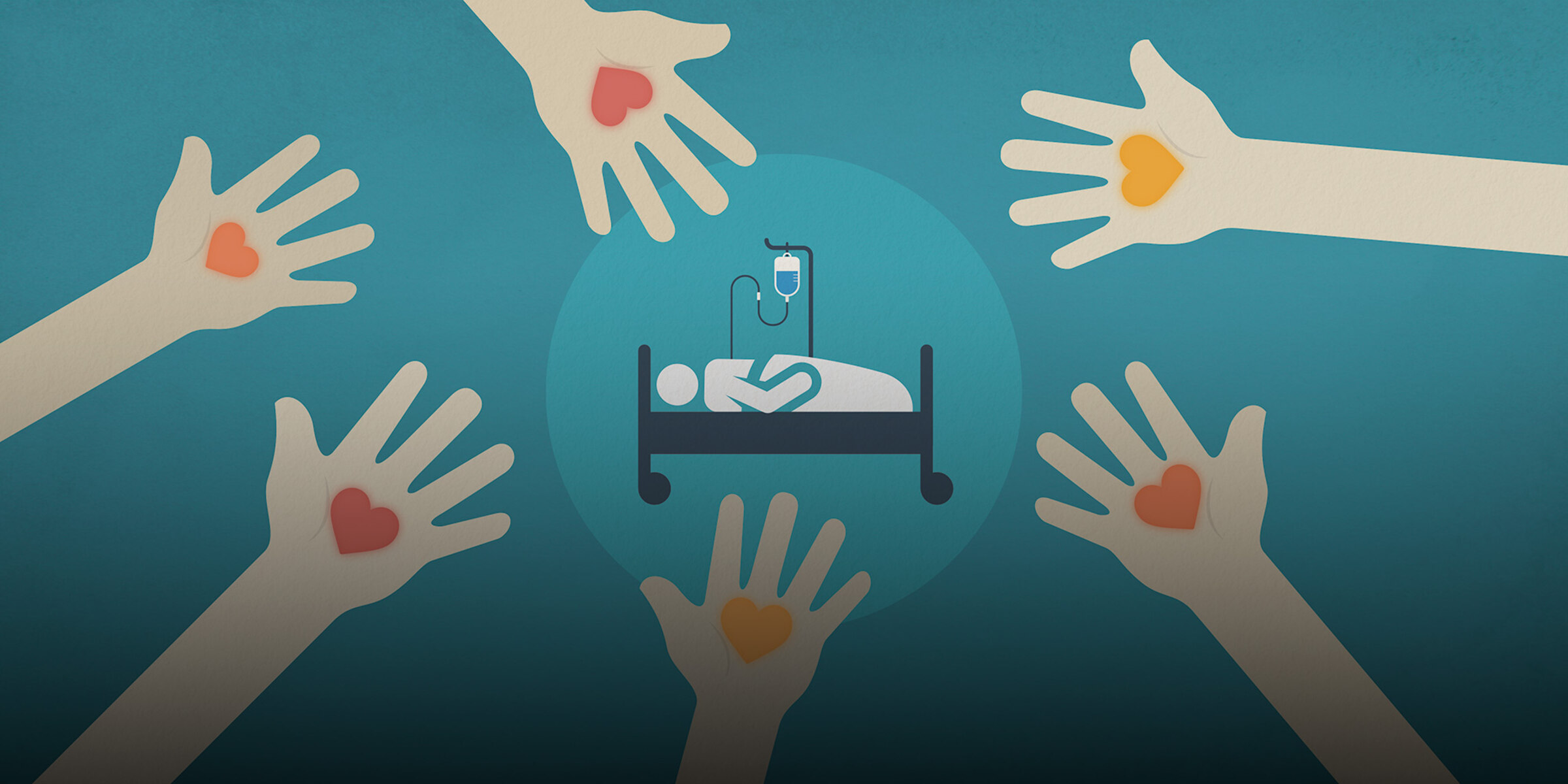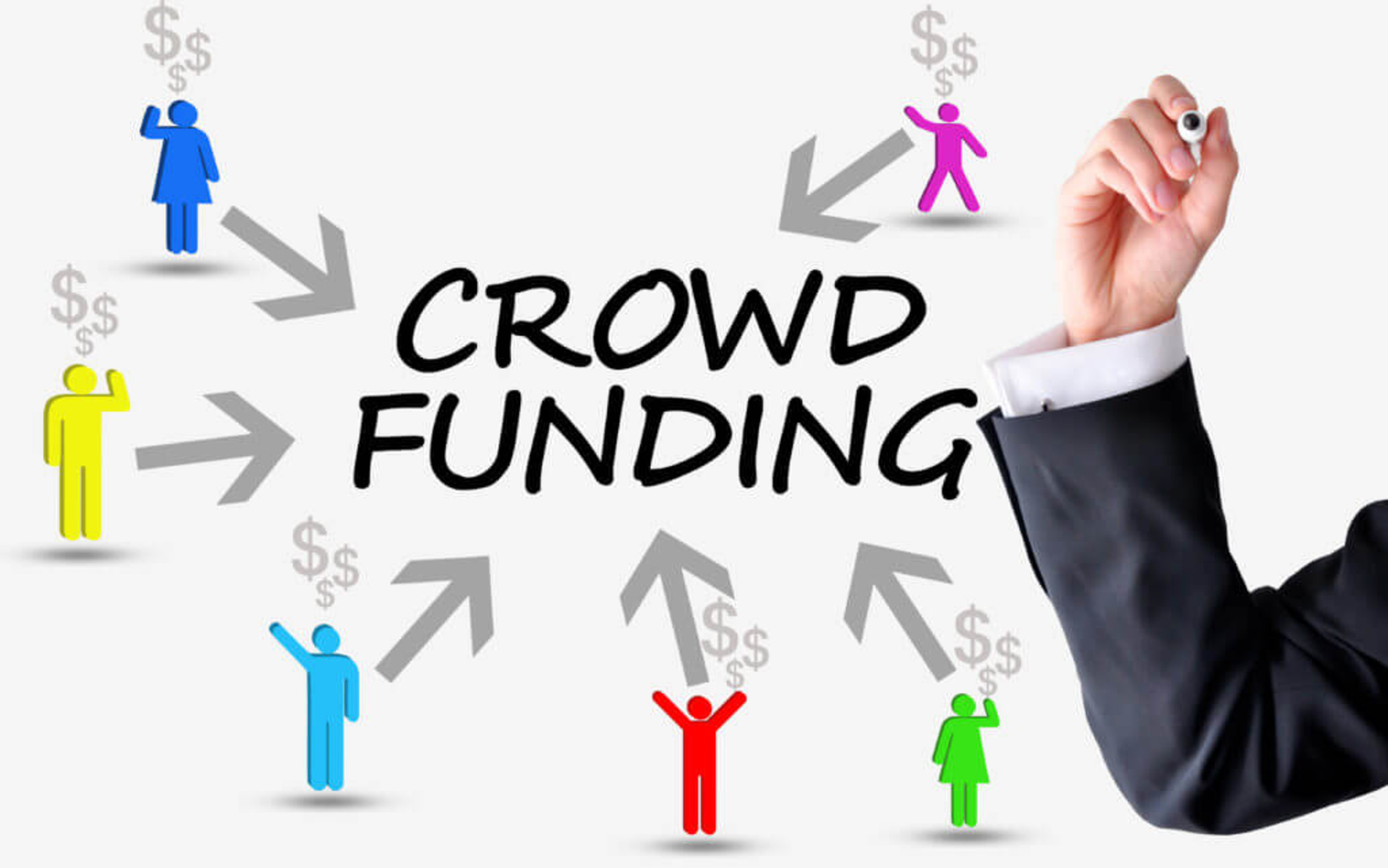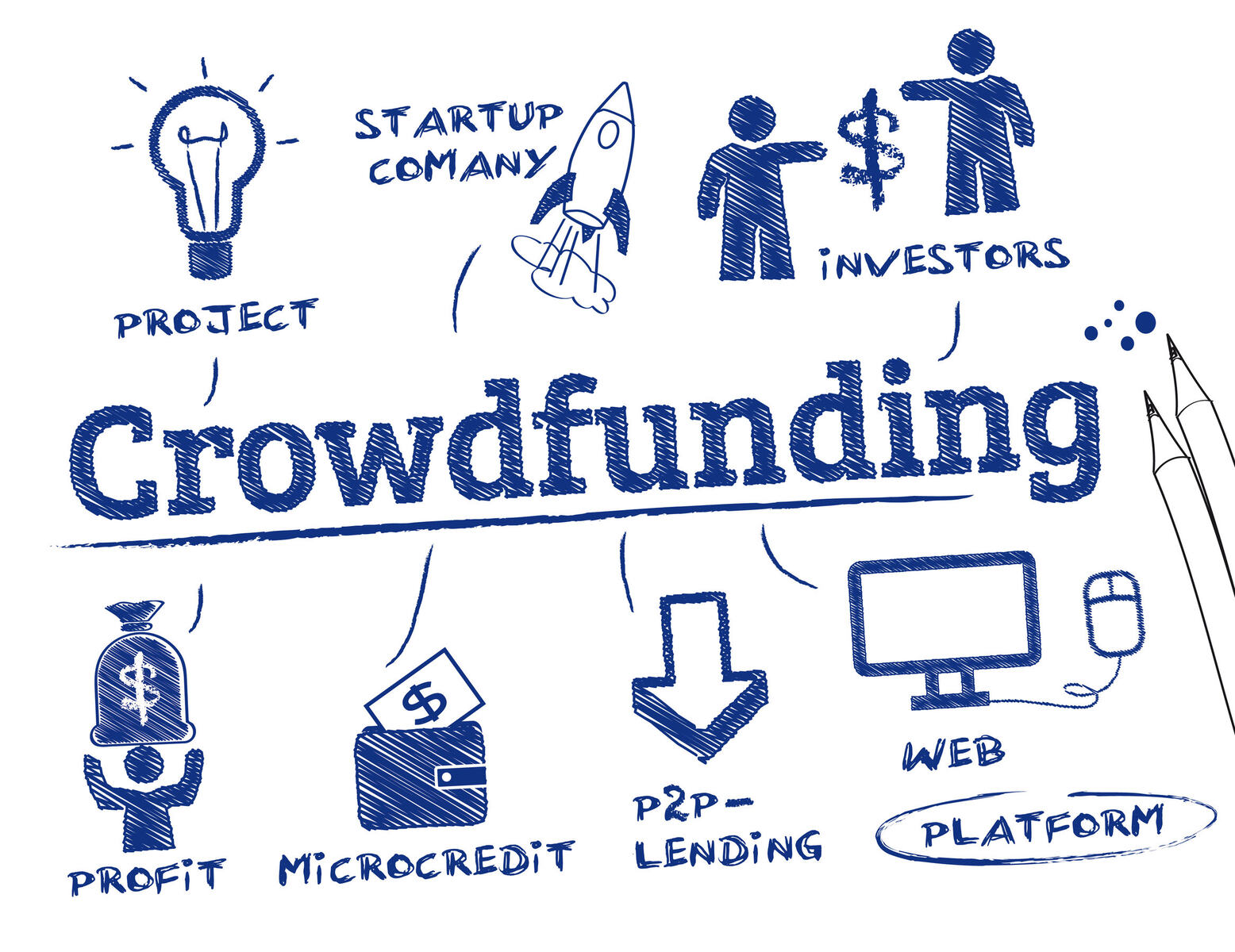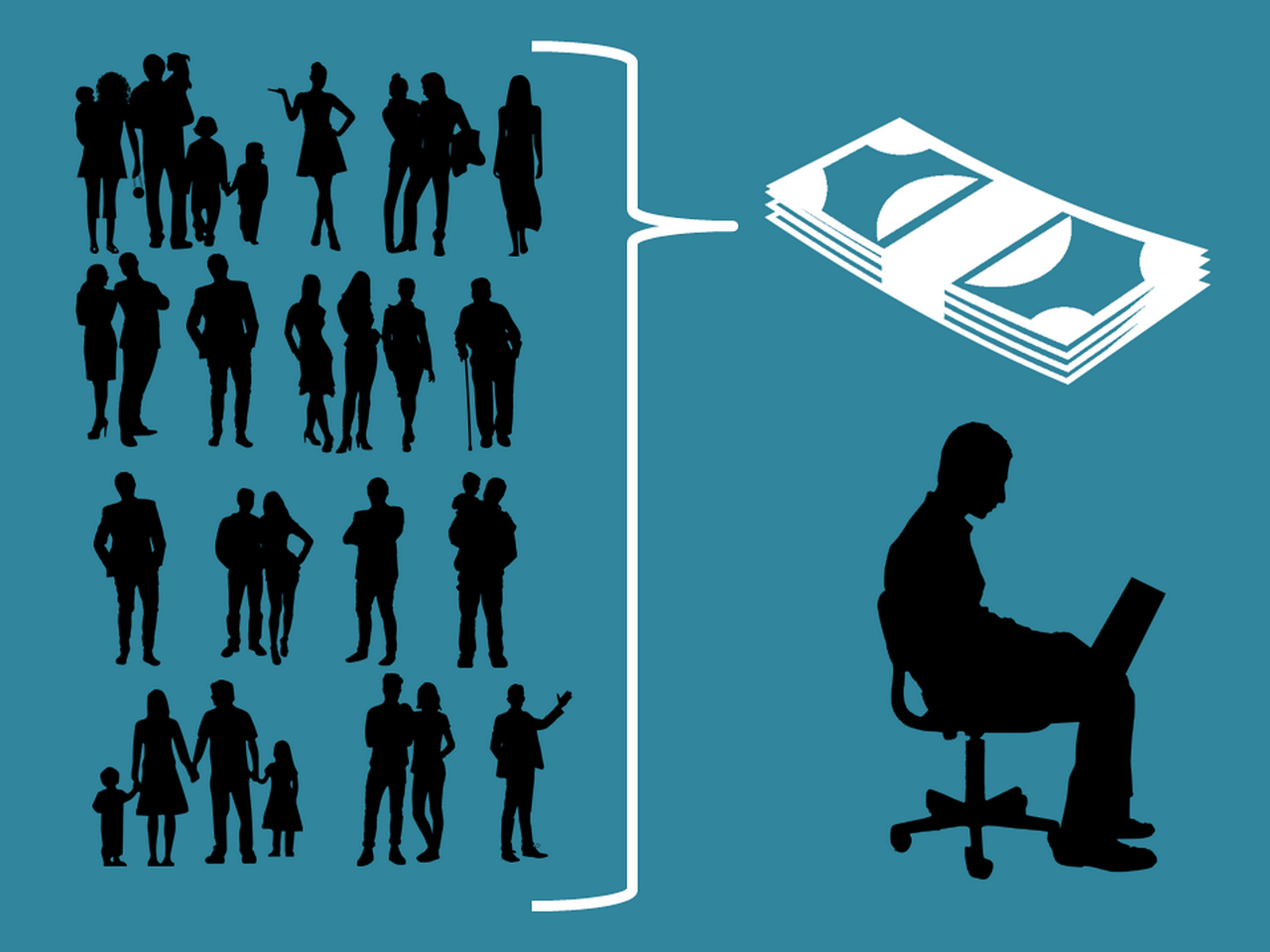Overview of Medical Crowdfunding
Medical crowdfunding has emerged as a powerful tool to help individuals and families cover the overwhelming costs associated with medical treatments, surgeries, and other healthcare expenses. It harnesses the power of the internet and social networks to connect those in need with generous individuals who are willing to contribute towards their cause.
With the rising cost of healthcare and the limitations of insurance coverage, many people find themselves facing significant financial burdens when it comes to accessing necessary medical care. Medical crowdfunding provides a lifeline for those who are unable to meet these expenses on their own.
The process of medical crowdfunding involves creating a personal campaign on a crowdfunding platform, detailing the individual’s medical condition, treatment plan, and the financial assistance required. This campaign is then shared through social media, email, and other channels to reach as many potential donors as possible.
One of the key advantages of medical crowdfunding is its ability to empower individuals to tell their stories and connect directly with a compassionate and supportive community. It offers a platform for individuals to share their struggles, aspirations, and hopes for a better quality of life.
Moreover, medical crowdfunding transcends geographical boundaries and allows people from all over the world to contribute. This global reach enhances the chances of success and provides a sense of solidarity among donors and recipients.
Not only does medical crowdfunding provide financial assistance, but it also serves as a morale booster and source of emotional support. It helps individuals and their families feel less alone in their journey and assures them that there are people who genuinely care about their well-being.
However, it is essential to note that medical crowdfunding is not a guaranteed solution. It requires effort, persistence, and effective storytelling to capture the attention and generosity of potential donors. Additionally, while it can be a powerful tool, it should not be seen as a substitute for comprehensive healthcare policies and affordable medical services.
In summary, medical crowdfunding has emerged as a viable option for individuals seeking financial assistance for their healthcare expenses. It harnesses the power of the internet and social networks to connect individuals in need with compassionate donors. With its global reach, emotional support, and potential for financial assistance, medical crowdfunding offers a glimmer of hope to those facing the daunting challenge of high medical costs.
How Does Medical Crowdfunding Work?
Medical crowdfunding operates on a simple principle: individuals in need of financial assistance for medical expenses create online campaigns to share their stories and appeal for support. These campaigns are hosted on dedicated crowdfunding platforms that provide a user-friendly interface for campaign creation and management.
The first step in utilizing medical crowdfunding is to select a suitable crowdfunding platform. There are numerous platforms available, each with its own features and fee structures. It is essential to research and choose a platform that aligns with your needs and goals.
Once a platform is selected, the individual or their representative creates a campaign by filling in the necessary details. These details typically include the medical condition, treatment plan, and the financial assistance required. It is crucial to provide accurate and compelling information to captivate potential donors.
A compelling campaign typically includes a heartfelt and well-written story that highlights the individual’s struggles, their aspirations for treatment, and the potential impact of financial support. It is also advisable to include engaging visuals such as photographs or videos to make the campaign more appealing and relatable.
After the campaign is created, it is essential to promote and share it widely. This is where the power of social media and personal networks comes into play. Campaign creators can share their campaign across various platforms, such as Facebook, Twitter, Instagram, and LinkedIn. They can also reach out to family, friends, and acquaintances via email or personal messages, encouraging them to share the campaign with their networks.
As the campaign gains visibility, potential donors have the opportunity to contribute financially. Most crowdfunding platforms offer various payment options, allowing individuals to donate using credit cards, PayPal, or other online payment methods. Some platforms may even have features such as recurring donations or the ability to set fundraising goals.
Throughout the campaign duration, it is crucial to maintain regular communication with donors and provide updates on the individual’s progress. This transparency helps build trust and keeps donors engaged and informed about the impact of their contributions.
Once the campaign concludes, and the fundraising goal has been met (or the predetermined deadline has passed), the collected funds are typically transferred to the campaign creator. It is essential to consult the crowdfunding platform’s guidelines regarding fund disbursement as each platform may have differing policies and timelines.
In essence, medical crowdfunding works by leveraging the internet and social networks to connect individuals in need with compassionate donors. Through engaging campaigns, widespread promotion, and transparent communication, medical crowdfunding has the potential to provide much-needed financial support for medical expenses.
Benefits of Medical Crowdfunding
Medical crowdfunding offers a range of benefits for individuals and families facing significant medical expenses. These benefits go beyond just financial support and have the potential to positively impact the overall well-being of those seeking assistance.
One of the primary advantages of medical crowdfunding is its ability to bridge the gap between individuals and communities. It enables people to connect with a network of compassionate individuals who are willing to contribute towards their healthcare needs. This sense of community and support can provide emotional upliftment and a renewed sense of hope.
Financial assistance is a crucial benefit of medical crowdfunding. Healthcare costs can quickly accumulate, and insurance coverage may not always be sufficient. Crowdfunding can help individuals access the funds necessary for essential medical treatments, surgeries, therapies, and medications. It provides a lifeline for those who would otherwise struggle to afford the care they need.
Medical crowdfunding is accessible to anyone with an internet connection, which means it transcends geographical boundaries. This global reach allows people from different parts of the world to contribute to campaigns, increasing the chances of reaching the fundraising goal. It also creates a sense of solidarity as donors from various backgrounds come together to support a common cause.
Flexibility is another noteworthy aspect of medical crowdfunding. Campaign creators have the freedom to set their fundraising goals and deadlines based on their specific needs. This autonomy empowers individuals to take control of their own healthcare journey and drive the campaign according to their preferences.
In addition to financial assistance, medical crowdfunding can also serve as a platform for educating and raising awareness about specific medical conditions. Through the personal stories shared in campaigns, people can learn about different health challenges and the impact they have on individuals and their families. This increased awareness can lead to greater empathy and understanding among the general public.
Furthermore, medical crowdfunding provides an opportunity for individuals to obtain real-time feedback and validation for their cause. The support received from donors signals that their medical needs are acknowledged and that there are people who genuinely care about their well-being. This validation can boost morale and inspire individuals to remain resilient in their healthcare journey.
Overall, medical crowdfunding offers a multitude of benefits, including emotional support, financial assistance, global reach, flexibility, and the opportunity for heightened awareness. Through the power of communities coming together, this form of crowdfunding can make a significant difference in the lives of those facing medical challenges.
Drawbacks of Medical Crowdfunding
While medical crowdfunding has gained popularity as a viable solution for funding healthcare expenses, it is important to recognize that it also comes with certain drawbacks that individuals should consider before launching a campaign.
Firstly, there is no guarantee of success in a medical crowdfunding campaign. The online space is saturated with numerous crowdfunding campaigns, making it challenging to stand out and attract the attention of potential donors. Not all campaigns receive the necessary funding, leaving individuals still burdened with significant medical expenses.
Another drawback is the potential for privacy concerns. Medical crowdfunding campaigns often require individuals to share personal and sensitive information about their medical condition, treatment plans, and financial struggles. While platforms take precautions to protect user data, there is still a risk of unauthorized access or potential misuse.
Medical crowdfunding campaigns heavily rely on the power of social media and personal networks for promotion. This can sometimes lead to campaign fatigue or donor apathy, as individuals may be bombarded with numerous crowdfunding appeals within their social circles. As a result, the reach and impact of a campaign can be limited if it fails to capture the attention of potential donors.
Furthermore, medical crowdfunding may not be a sustainable long-term solution for ongoing or chronic medical expenses. While it can provide immediate financial relief for a specific medical procedure or treatment, it may not adequately address the ongoing healthcare needs or the need for follow-up care and medications.
In addition, the competitive nature of medical crowdfunding can contribute to heightened stress and anxiety for individuals and families already dealing with significant medical challenges. The pressure to meet fundraising goals and the fear of falling short can exacerbate an already challenging situation.
Moreover, medical crowdfunding is not a substitute for comprehensive healthcare policies and affordable medical services. It is important to advocate for systemic changes that address the underlying issues of high medical costs and limited access to quality healthcare.
Lastly, there can be ethical dilemmas associated with medical crowdfunding. Some campaigns may involve unproven or experimental treatments that raise ethical concerns. Donors need to critically evaluate the legitimacy and credibility of the campaigns they contribute to, to ensure their donations are used responsibly and ethically.
In summary, while medical crowdfunding can provide much-needed financial assistance for healthcare expenses, it is essential to consider the drawbacks. These include the lack of guaranteed success, potential privacy concerns, donor fatigue, limited scope, heightened stress, the need for comprehensive healthcare policies, and ethical considerations. Individuals should carefully weigh these factors before embarking on a medical crowdfunding campaign.
Tips for a Successful Medical Crowdfunding Campaign
Launching a successful medical crowdfunding campaign requires careful planning, effective communication, and strategic promotion. Here are some essential tips to maximize your chances of a successful campaign:
1. Tell a compelling story: Craft a compelling and authentic narrative that highlights your medical journey, challenges, and aspirations. Engage potential donors by evoking emotions and connecting with their empathy.
2. Choose the right platform: Research and select a crowdfunding platform that aligns with your campaign goals, offers user-friendly features, and has a strong track record of successful medical campaigns.
3. Set a realistic fundraising goal: Determine the amount of money you need for your medical expenses and set a realistic fundraising goal. Be transparent about how the funds will be used to instill confidence in potential donors.
4. Utilize engaging visuals: Include visually appealing images and videos that showcase your journey, medical condition, and the positive impact of the funds raised. Visuals can significantly enhance the appeal and relatability of your campaign.
5. Craft a clear and concise campaign description: Clearly explain your medical condition, the treatments or procedures required, and the financial assistance needed. Avoid jargon and use language that can be easily understood by a diverse audience.
6. Leverage the power of social media: Utilize social media platforms to promote your campaign to a wider audience. Engage with your network, at both personal and community levels, and encourage them to share your campaign with their own networks.
7. Share regular updates: Keep your donors informed about the progress of your campaign and the impact their contributions have made. Regular updates help maintain their interest and build trust in your campaign.
8. Express gratitude: Express sincere gratitude towards your donors, both individually and collectively. Show appreciation for their support and make them feel acknowledged and valued.
9. Engage with your supporters: Regularly interact with your donors and supporters by responding to comments, messages, and emails. This engagement helps foster a sense of community and encourages further support.
10. Seek media coverage: Reach out to local media outlets, community organizations, and influential individuals who may be interested in your story. Media coverage can significantly amplify your campaign and attract more donors.
11. Follow ethical guidelines: Be transparent and honest in your campaign, ensuring the responsible utilization of the funds raised. Comply with the terms and guidelines of your chosen crowdfunding platform to maintain credibility.
12. Seek professional advice: Consider consulting with professionals, such as social media managers, crowdfunding consultants, or healthcare advocates, who can provide guidance and expertise in maximizing the impact of your campaign.
By following these tips, you can enhance the visibility and success of your medical crowdfunding campaign, increasing your chances of reaching your fundraising goal and receiving the necessary financial assistance for your healthcare needs.
Real-Life Examples of Successful Medical Crowdfunding Campaigns
Medical crowdfunding has been instrumental in helping individuals and families overcome financial barriers to access necessary healthcare. Here are some inspiring real-life examples of successful medical crowdfunding campaigns:
1. Baby Charlie’s Heart Surgery: Charlie, a baby born with a congenital heart defect, needed immediate surgery to survive. His parents launched a crowdfunding campaign to raise funds for the high-cost surgery. Through their compelling story, they garnered massive support from friends, family, and even strangers. The campaign surpassed its fundraising goal, enabling baby Charlie to undergo the life-saving surgery.
2. Cancer Treatment for Sarah: Sarah, a young woman diagnosed with an aggressive form of cancer, embarked on a medical crowdfunding campaign to access cutting-edge treatments not covered by her insurance. Through a powerful campaign that highlighted her journey and determination, Sarah received overwhelming support. The funds raised allowed her to pursue the unconventional treatments, leading to a remarkable improvement in her condition.
3. Brian’s Road to Recovery: After a devastating accident left Brian paralyzed from the waist down, his family launched a medical crowdfunding campaign to obtain funds for specialized rehabilitation and mobility equipment. Their campaign garnered attention from local news outlets and the broader community. The generous donations received facilitated Brian’s recovery journey and significantly improved his quality of life.
4. Grace’s Hope for a Kidney Transplant: Grace, a young girl suffering from kidney failure, needed a life-saving transplant. Her family initiated a crowdfunding campaign to cover the hefty costs associated with the surgery and post-transplant care. The campaign gained tremendous traction on social media, and the funds raised helped secure a kidney donor and provided financial support throughout the transplant process.
5. Peter’s Fight Against Rare Disease: Peter, diagnosed with a rare and debilitating disease, launched a medical crowdfunding campaign to access experimental treatments and ongoing medical care. Through his heartfelt campaign, which included videos of his daily struggles and aspirations, Peter garnered support from a global community. The funds raised not only covered his medical expenses but also funded research into finding a cure for the disease.
These real-life examples demonstrate the power of medical crowdfunding in providing individuals with hope, support, and financial assistance during challenging health journeys. They showcase the generosity and compassion of communities coming together to make a tangible difference in the lives of those in need.
It is important to note that the success of these campaigns can be attributed to the individuals’ effective storytelling, widespread promotion, and engagement with their supporters. By drawing inspiration from these success stories, individuals can learn from their strategies and apply them to their own medical crowdfunding campaigns.
How to Choose the Right Medical Crowdfunding Platform
When embarking on a medical crowdfunding campaign, selecting the right crowdfunding platform is crucial for maximizing your chances of success. Here are some factors to consider when choosing a platform:
1. Reputation and Track Record: Research the platform’s reputation and track record in hosting successful medical crowdfunding campaigns. Look for platforms that have a solid history of supporting healthcare-related campaigns and have garnered positive reviews from campaign creators and donors.
2. Fee Structure: Familiarize yourself with the platform’s fee structure and understand the costs associated with hosting a campaign. Some platforms charge a percentage of the funds raised as a service fee, while others may have upfront or additional fees. Evaluate how these fees align with your fundraising goals and budget.
3. Customization Options: Assess the level of customization the platform offers for your campaign. Look for platforms that allow you to add compelling visuals, personalize your campaign message, and showcase your medical journey effectively. Customization options can significantly enhance the impact and appeal of your campaign.
4. Payment Options: Consider the available payment options offered by the platform. Ensure there is a variety of payment methods available for potential donors, such as credit cards, PayPal, or other online payment gateways. The more options available, the easier it will be for donors to contribute.
5. Accessibility and User-Friendliness: Evaluate the platform’s accessibility and user-friendliness for both campaign creators and donors. A user-friendly interface and intuitive navigation can make the campaign creation process smoother and encourage donor engagement. Consider features like campaign updates, donor management, and social media integration.
6. Data Security and Privacy: Prioritize platforms that prioritize data security and have clear privacy policies. Ensure that personal and sensitive information of both campaign creators and donors will be protected and not shared or sold to third parties without consent.
7. Support and Customer Service: Look for platforms that provide comprehensive support and responsive customer service. Having access to assistance when encountering technical issues or needing guidance can be invaluable during your campaign. Research the platform’s available support channels, such as email, live chat, or phone support.
8. Social Sharing Features: Consider platforms that have robust social sharing features. The ability to easily share your campaign on various social media platforms can significantly expand your reach and increase the likelihood of donations from personal networks and beyond.
9. Transparency and Accountability: Seek platforms that prioritize transparency and accountability. Platforms that provide clear guidelines, ensure funds go directly to campaign creators, and offer transparent reporting on funds raised and disbursed can enhance trust and credibility.
10. Community and Networking Opportunities: Some platforms offer community forums or networking opportunities for campaign creators. These features can facilitate connections with other individuals or organizations in similar situations, allowing you to learn from their experiences, exchange advice, and garner additional support for your campaign.
By carefully considering these factors and conducting thorough research, you can choose the right medical crowdfunding platform that aligns with your campaign goals, maximizes your chances of success, and provides a secure and user-friendly environment for your fundraising efforts.

























